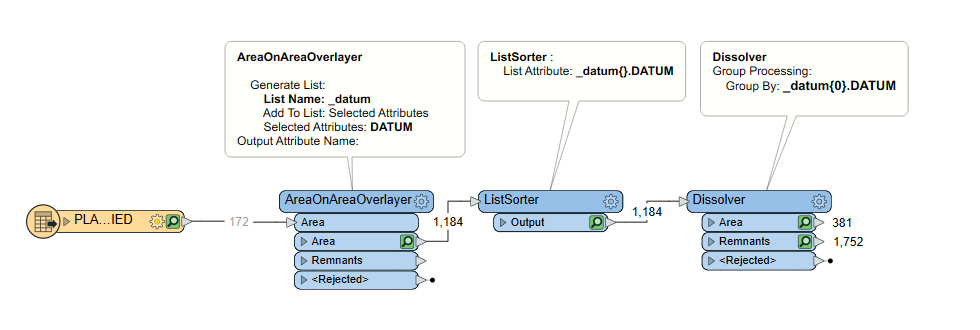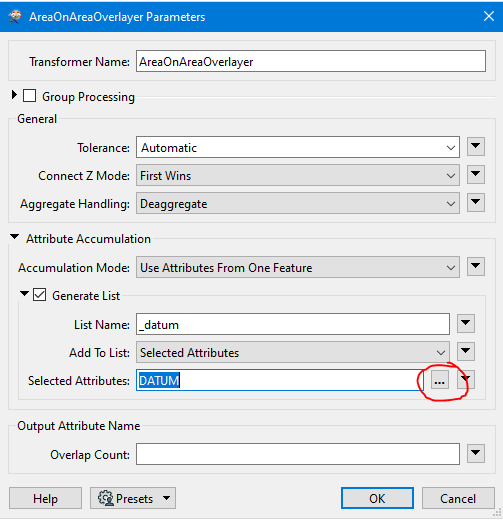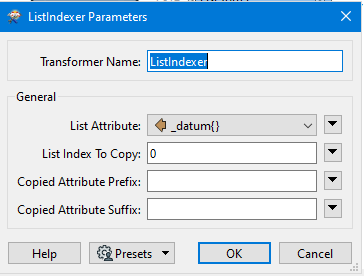I have a polygon layer with overlapping polygons. These polygons have dates. What I would like to have is no more overlapping polygons.
Where two or more polygons overlap, I would like to preserve the youngest polygon. If the size of the overlapping polygons are different, then I would like to cut out the youngest polygon and preserve what is left from the older polygon.








 AreaOnAreaOverlayer as mentioned above, but create a list of the dates (DATUM). Use ListSorter to sort the date list then Dissolve on the first date in the list.
AreaOnAreaOverlayer as mentioned above, but create a list of the dates (DATUM). Use ListSorter to sort the date list then Dissolve on the first date in the list.  The listindexer I will try to explore, never used it.
The listindexer I will try to explore, never used it. 